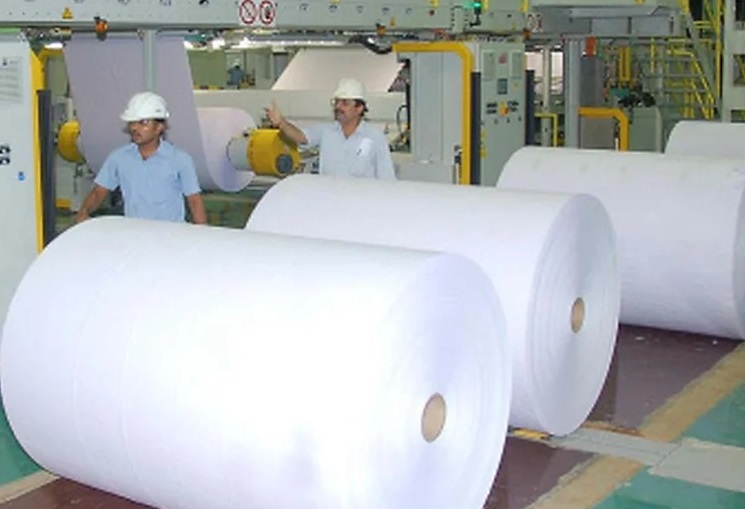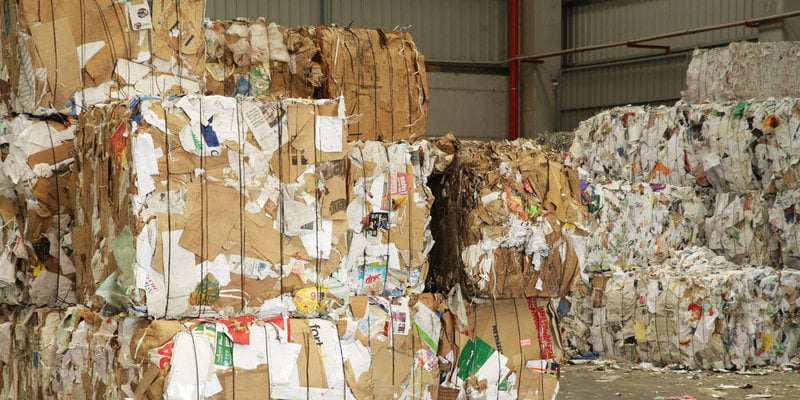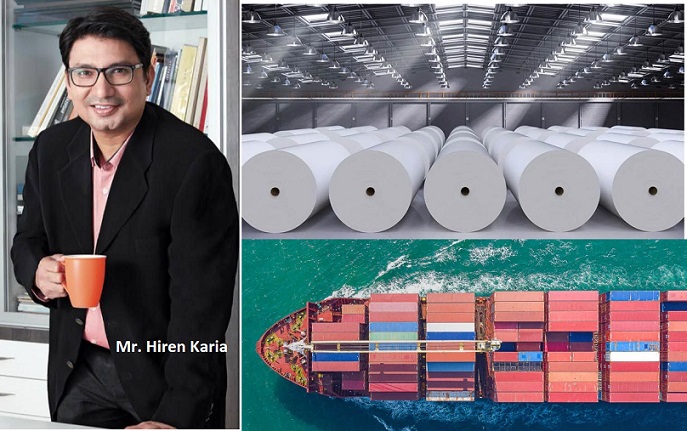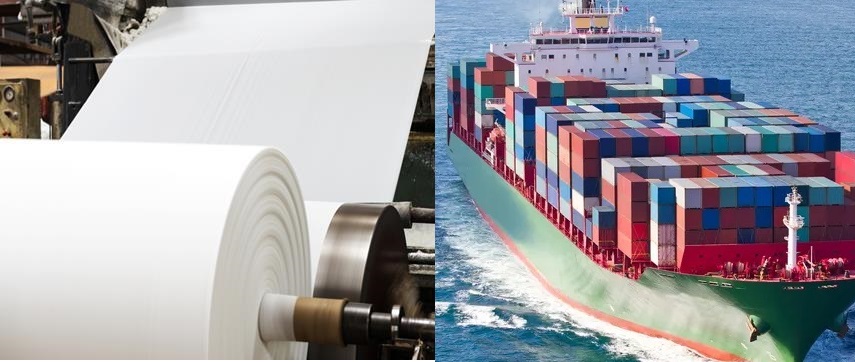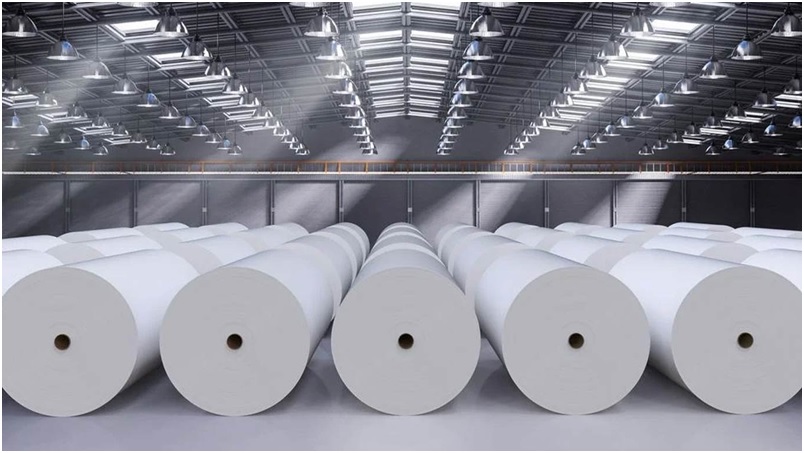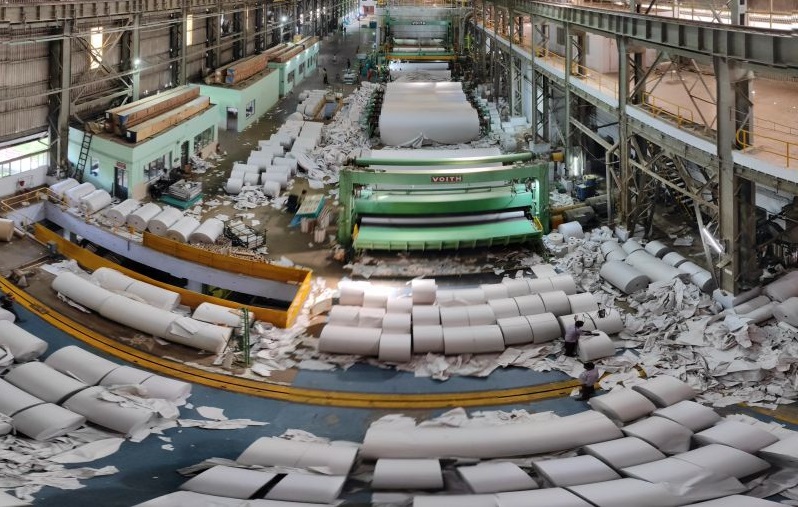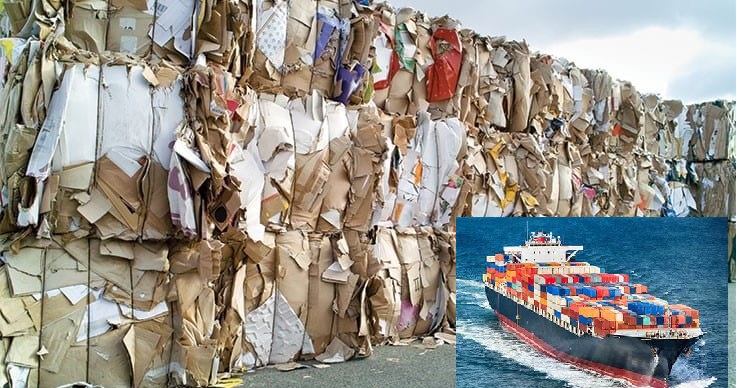Market may indeed see a price rise for both domestic waste paper and finished kraft paper due to Red Sea Crisis, says Anand Agarwal

Market may indeed see a price rise for both domestic waste paper and finished kraft paper due to Red Sea Crisis, says Anand Agarwal
- Delays in shipments due to vessel suspensions can disrupt the timely delivery of finished paper products to both domestic and international markets.
- The price of imported recovered fiber for India could indeed see a rise in the coming time
- Overall, proactive planning, strategic adaptation, and collaboration will be key for the paper industry
The Pulp and Paper Times spoke to Mr. Anand Agarwal, Director at Shree Rudra Lamkraft Pvt. Ltd. based in Ahmedabad, is a leading absorbent kraft paper mill specializing in high-quality paper products. Mr. Agarwal shares his though about the present state of Indian Kraft Paper Industry, Export scenario and Red Sea crisis. Here are his full views:
The Pulp and Paper Times:
Q: What main reason do you think is behind this demand crisis? In the comparison of 2023
The main reason behind the demand crisis in the paper market, compared to 2023, could be attributed to a combination of factors, including supply chain disruptions caused by the Red Sea crisis, and fluctuations in waste paper prices due to over production.
Q: India has become overproduced in the kraft paper segment; new paper capacities have increased by 30 to 40 % in last three to four years. Do you feel that the paper business will no longer be profitable? If ‘NO’ then why?
Despite the overproduction in the kraft paper segment in India, the paper business can still be profitable. This is because there will always be a demand for paper products, especially in sectors like packaging, education, and stationery. Additionally, companies can adapt their strategies to optimize production efficiency, explore new markets, manufacture grades which are currently being imported and remain competitive and profitable in the industry.
Q: With new massive paper production capacities in South East Asia, Europe and Brazil producing packaging paper on a large scale, don’t you think that the Export of paper from India will remain decreased in future?
The increased production capacities in South East Asia, Europe, and Brazil could potentially impact India's export of paper in the future. However, India can still maintain its export market by focusing on producing specialized paper products, enhancing quality standards, and exploring niche markets where it can offer competitive advantages such as cost-effectiveness or unique product features. Additionally, India can also focus on expanding its domestic market to offset any potential decrease in exports.
Q: How this suspension of vessels in the Red Sea impacts the Indian Paper Industry?
The suspension of vessels in the Red Sea can impact the Indian Paper Industry in several ways. Firstly, it can disrupt the supply chain of raw materials, such as pulp, which is essential for paper production. This can lead to shortages and increased prices, thereby affecting production costs for Indian paper manufacturers.
Secondly, delays in shipments due to vessel suspensions can disrupt the timely delivery of finished paper products to both domestic and international markets. This can result in customer dissatisfaction, order cancellations, and loss of market share for Indian paper companies.
Furthermore, the uncertainty and instability caused by the Red Sea crisis can lead to fluctuations in currency exchange rates and raw material prices, which can further impact the profitability of the Indian paper industry.
Overall, the suspension of vessels in the Red Sea poses significant challenges for the Indian Paper Industry, affecting both its supply chain and market competitiveness.
Q: Will the price of imported recovered fibre for India see a rise in price in the coming time? Any assumption of price per tonne?
The price of imported recovered fiber for India could indeed see a rise in the coming time due to various factors such as supply chain disruptions, increased demand, and currency fluctuations. However, predicting the exact price per tonne is challenging due to the dynamic nature of the market and the influence of multiple variables.
Assumptions for the price per tonne would depend on factors such as the severity and duration of the supply chain disruptions, changes in demand from other regions, government policies affecting international trade, and fluctuations in currency exchange rates. It's advisable for stakeholders in the Indian paper industry to closely monitor these factors and adjust their strategies accordingly to mitigate any potential impacts on the cost of imported recovered fiber.
Q: Domestic waste paper and finished kraft paper may have a price impact due to this crisis. May the market see the price rise?
Yes, the market may indeed see a price rise for both domestic waste paper and finished kraft paper due to the crisis. Supply chain disruptions, increased demand for packaging materials, and fluctuations in raw material prices can all contribute to upward pressure on prices.
With disruptions in the supply of imported recovered fiber and potential delays in shipments, domestic waste paper could become more sought after as an alternative raw material for paper production. This increased demand could drive up prices for domestic waste paper.
Similarly, the increased production costs and potential supply constraints in obtaining raw materials may lead to higher prices for finished kraft paper in the market. Businesses may pass these increased costs onto consumers, resulting in price rises for kraft paper products.
Overall, the crisis could lead to price impacts throughout the paper market, affecting both raw materials and finished products.
Q: Any other important comment for the paper industry? or any planning and strategy to be followed.
One important aspect for the paper industry to consider amidst these challenges is diversification. Diversifying both product offerings and supply chain sources can help mitigate risks associated with disruptions in specific markets or regions.
Strategic planning should focus on optimizing operational efficiency, exploring new markets and revenue streams, and strengthening partnerships with suppliers and customers.
Furthermore, collaboration within the industry and with relevant stakeholders, including government bodies and industry associations, can facilitate knowledge sharing, advocacy for supportive policies, and collective responses to challenges.
Overall, proactive planning, strategic adaptation, and collaboration will be key for the paper industry to navigate through the current crisis and emerge stronger in the long term.
About Company:
Shree Rudra Lamkraft Pvt. Ltd., based in Ahmedabad, is a leading absorbent kraft paper mill specializing in high-quality paper products. With a commitment to excellence and innovation, the company boasts state-of-the-art manufacturing facilities and a dedicated team of professionals. Specializing in absorbent kraft paper, our products cater to all major laminate manufacturers in India and abroad. Shree Rudra Lamkraft Pvt. Ltd. prides itself on its sustainable practices, ensuring environmentally friendly production processes and products. With a focus on customer satisfaction and reliability, we continue to be a trusted name in the paper industry.
Web Title: Market may indeed see a price rise for both domestic waste paper and finished kraft paper due Red Sea Crisis, says Anand Agarwal




 Join WhatsApp Group
Join WhatsApp Group Join Telegram Channel
Join Telegram Channel Join YouTube Channel
Join YouTube Channel Join Job Channel (View | Submit Jobs)
Join Job Channel (View | Submit Jobs)






